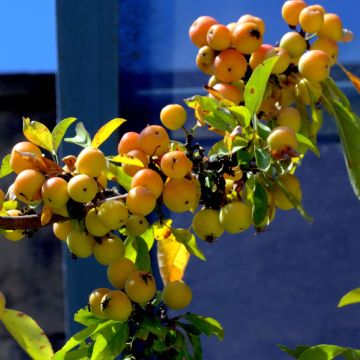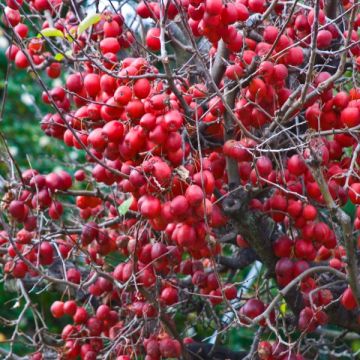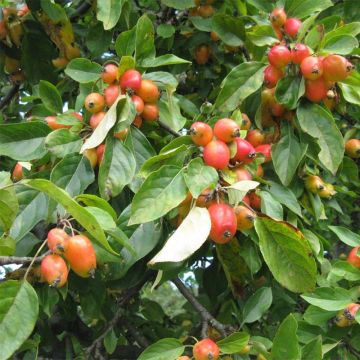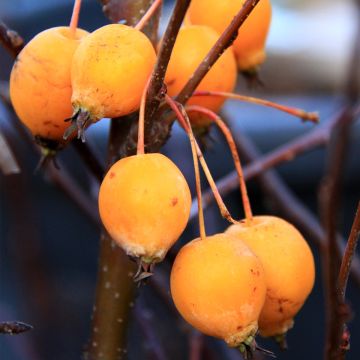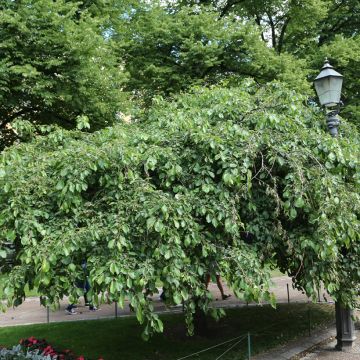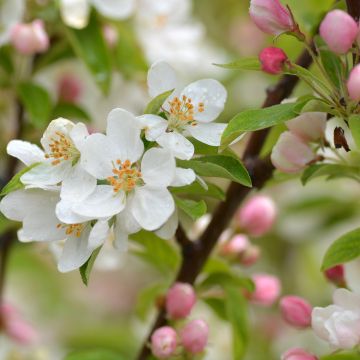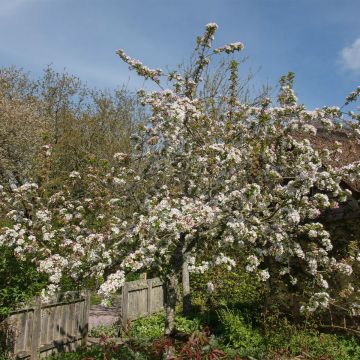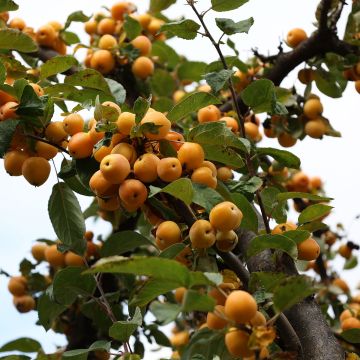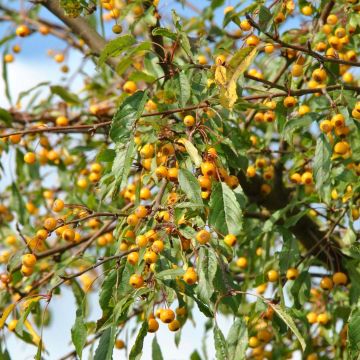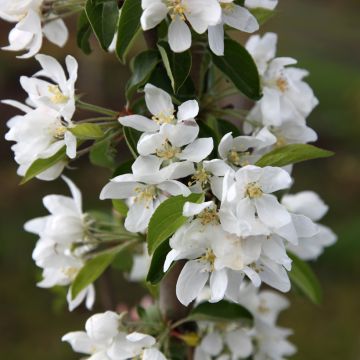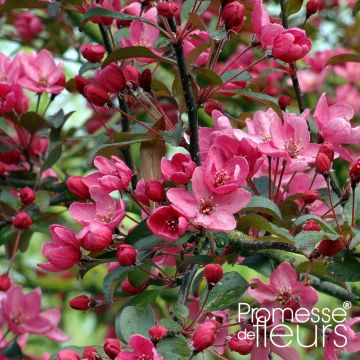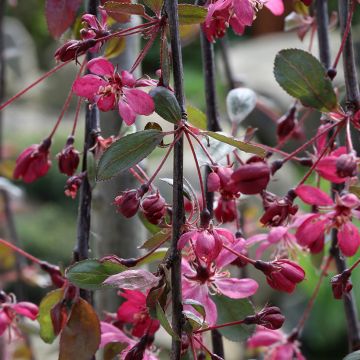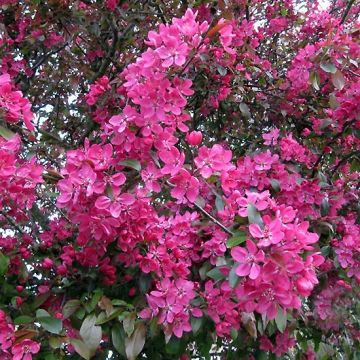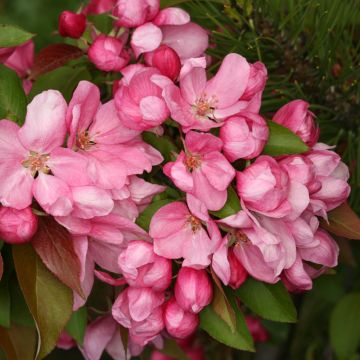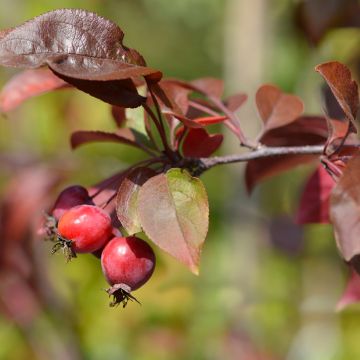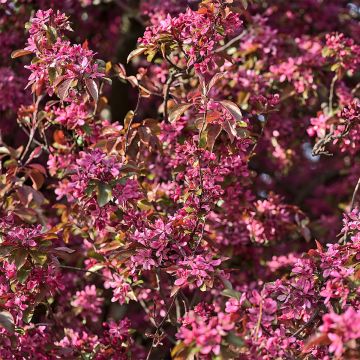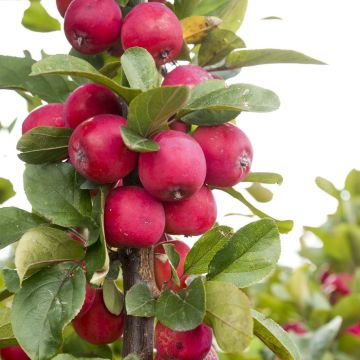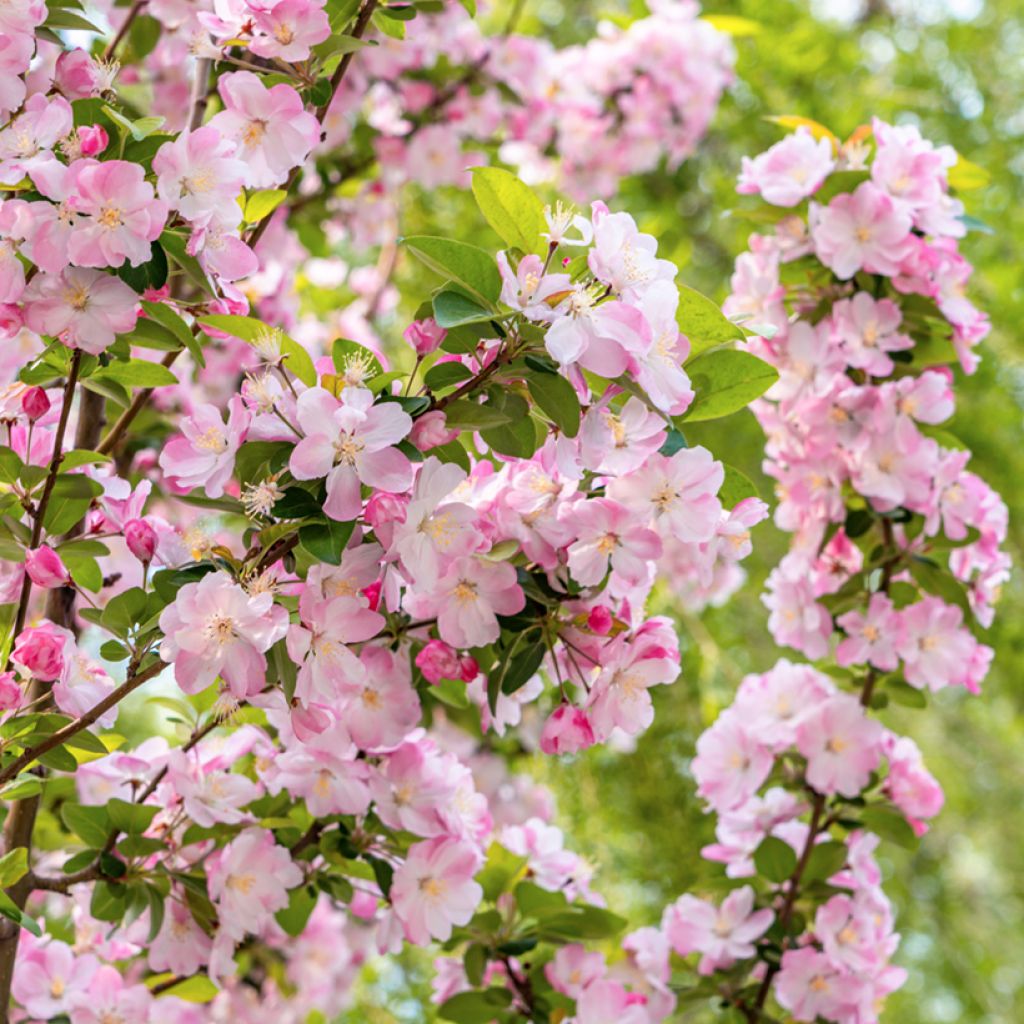

Malus micromalus - Dwarf Crab Apple
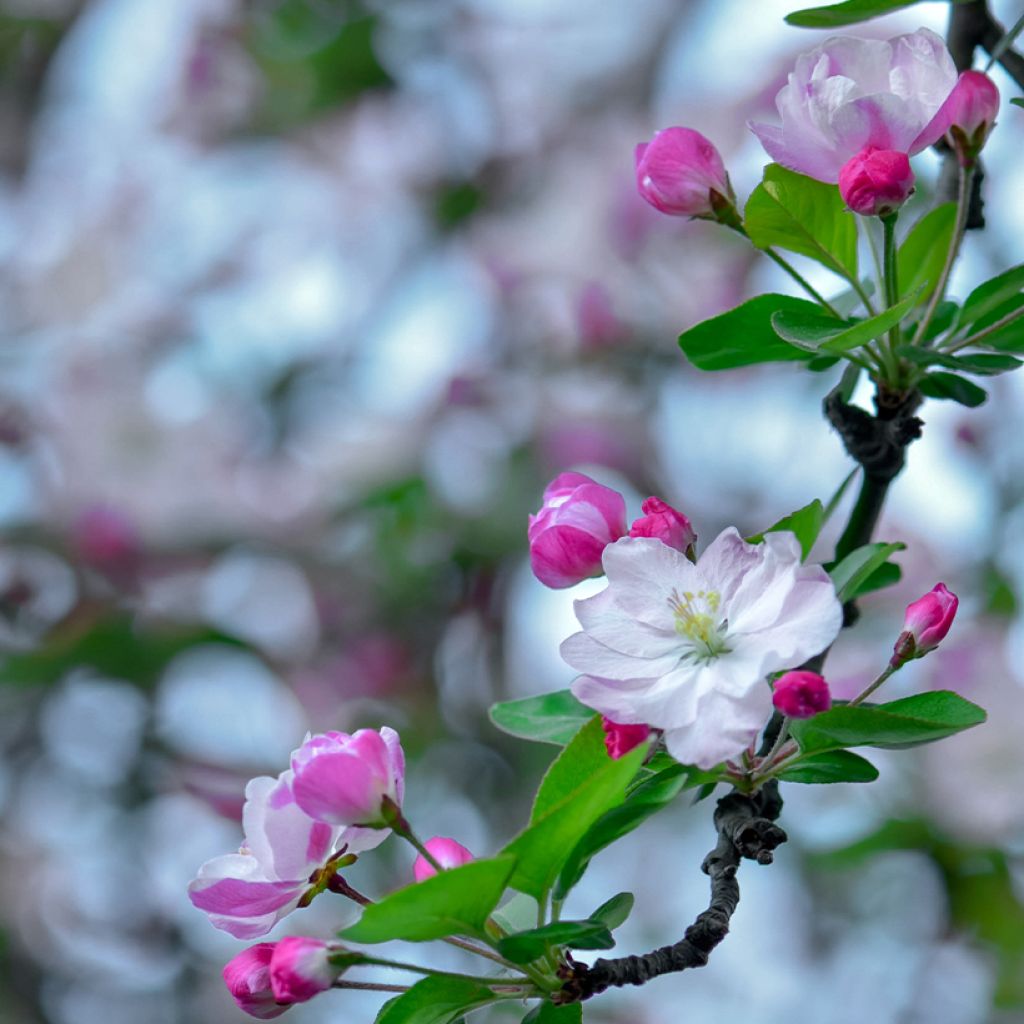

Malus micromalus - Dwarf Crab Apple
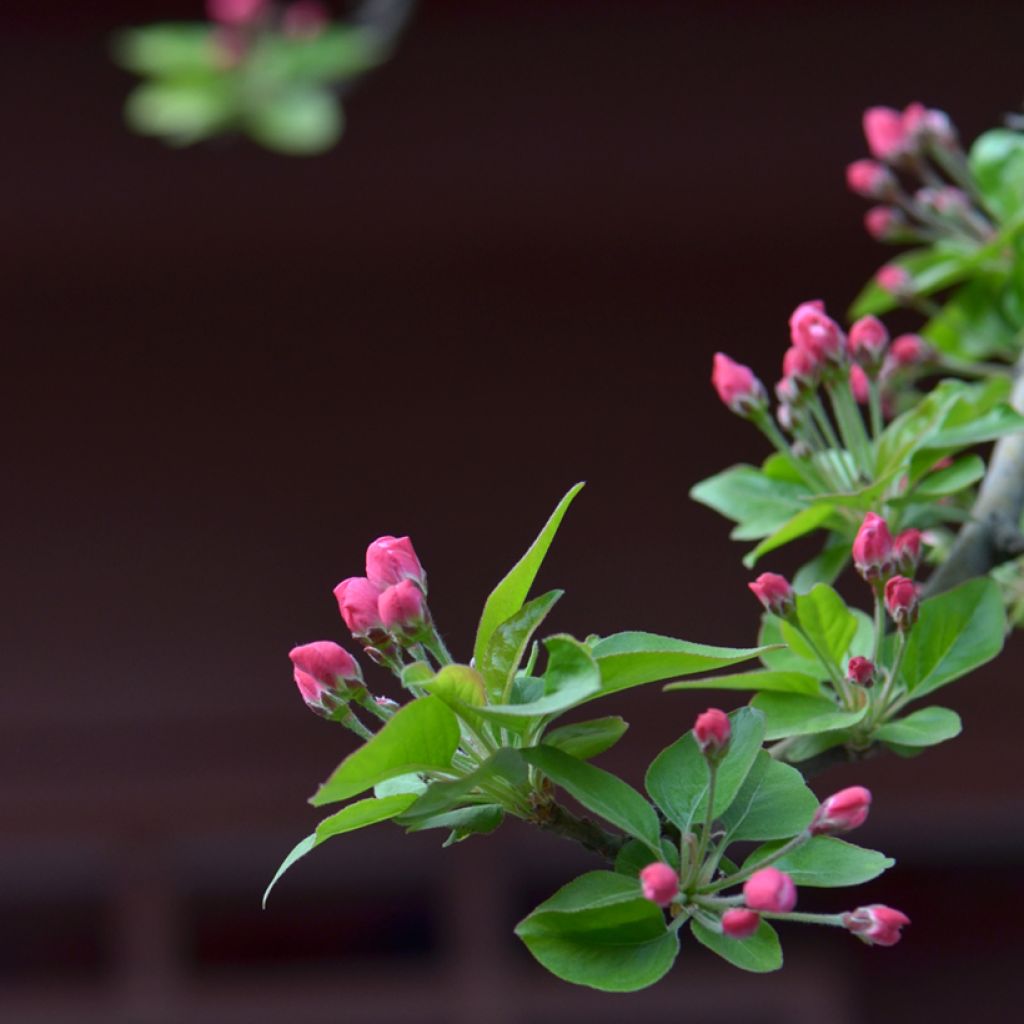

Malus micromalus - Dwarf Crab Apple
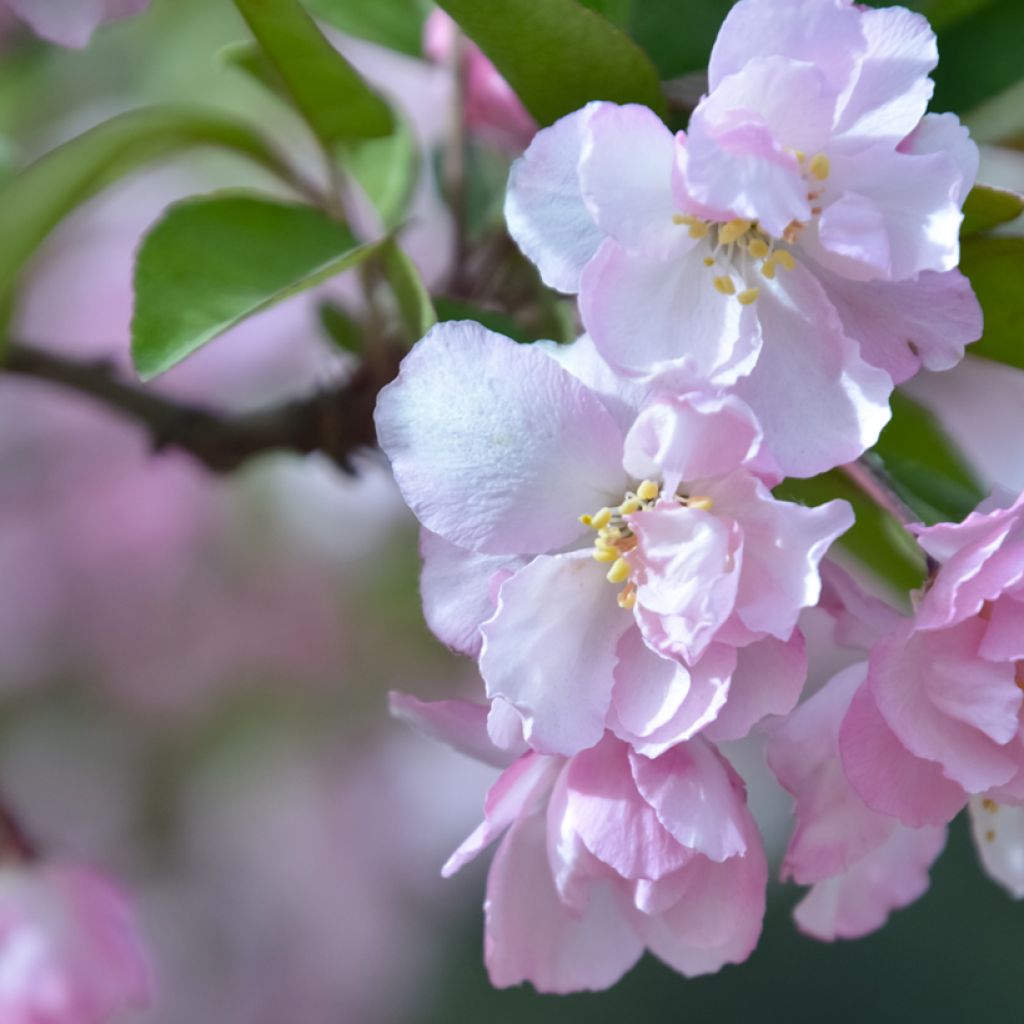

Malus micromalus - Dwarf Crab Apple
Malus micromalus - Dwarf Crab Apple
Malus x micromalus
Crabapple, Japanese Crab, Japanese Flowering Crabapple
Why not try an alternative variety in stock?
View all →This plant carries a 24 months recovery warranty
More information
We guarantee the quality of our plants for a full growing cycle, and will replace at our expense any plant that fails to recover under normal climatic and planting conditions.
From €5.90 for pickup delivery and €6.90 for home delivery
Express home delivery from €8.90.
Does this plant fit my garden?
Set up your Plantfit profile →
Description
Malus x micromalus is a well-known ornamental apple tree for bonsai enthusiasts. It is also known by the names Malus 'Kaido', M. spectabilis var. kaido, or Pyrus ringo var. kaido. With a modest stature, this small tree has a strong personality. It forms a true ball of flowers in spring, then it is covered with small golden apples, while the foliage has already taken on autumn colours. The plant is interesting from early spring to early winter. This old variety is hardy and easy to grow in ordinary soil, it undoubtedly deserves to be rediscovered.
Ornamental apple trees come from various botanical species of the genus Malus belonging to the rose family. Hardy and adaptable, Flowering Crabapples tolerate ordinary soil, but prefer loamy, deep, loose, and moist soil, as well as sunny exposures. Once established, they can be left to themselves while maintaining their generous character. Malus x micromalus is a hybrid of uncertain origin, possibly between M. baccata and M. spectabilis. This plant has been widely cultivated in China for a long time where it continues to be used as a rootstock. It was introduced to Japan, probably in the Middle Ages, and to Korea. Its introduction to Europe from Japan, around 1845, was the work of Philipp von Siebold, who named it M. spectabilis var. kaido in 1856.
This dwarf apple tree with a very short trunk initially develops rather upright branches, and it is only with time that its crown widens and spreads, adopting the typical shape of apple trees. Its growth is quite slow. Ultimately, it measures between 2.50 m and 3 m in height with a spread of 2.25 m at the age of 15. It maintains a harmonious shape without the need for pruning and develops flexible wood covered with a smooth brown bark that darkens and flakes with age. The particularly abundant flowering takes place in April-May, earlier or later depending on the region. It takes the form of deep pink buds that open into semi-double, 3 cm diameter flowers which quickly become white. The flowers and buds create a delightful contrast of colour on the branches. These flowers, gathered in small clusters, bloom before the young leaves. Flowering is followed by the formation of numerous tiny apples resembling cherries. When ripe in October-November, they are yellow, washed with bronze. These fruits are loved by birds and can remain on the bush for half of the winter, until December. The deciduous foliage, composed of leaves divided into 3 lobes, is particularly elegant. It starts green and turns purple, orange, and orangish-yellow before falling quite late.
Malus x micromalus, like many flowering apple trees, is a good pollinator for early-flowering fruit trees. This small tree has more presence than a flowering cherry tree, and its modest dimensions are perfect for small spaces. Its abundant flowering may be less long-lasting than that of the latter, but this detail is compensated by the beauty of the foliage in autumn, the beautiful fruits, and the elegance of its habit. It can be planted as a specimen tree or prominently in a mixed hedge. To accompany it, choose, for example, large English bush roses or climbing roses trained as shrubs, hawthorns, lilacs, or saskatoon juneberries. When space allows, ornamental apple trees, planted in a large hedge on a slope bordering a sunken path, create a rather magical scene not only in spring but also in autumn, due to their sumptuous colours at the end of the season.
Report an error about the product description
Plant habit
Flowering
Foliage
Botanical data
Malus
x micromalus
Rosaceae
Crabapple, Japanese Crab, Japanese Flowering Crabapple
Malus x Kaido, Malus spectabilis var. kaido, Pyrus ringo var. kaido
Cultivar or hybrid
Other Malus - Crabapple
Planting and care
Easy to grow in ordinary soil (slightly acidic to slightly alkaline), Malus x micromalus requires a bright, sunny and open exposure. Ornamental Malus trees are generally very accommodating, but they like fertile, moist and deep soils. After careful planting and regular watering during the first two years, they manage on their own. Plant it in the sun or partial shade, giving it room to spread. Dig a large planting hole. If the soil is poor, add compost to the planting soil and apply fertiliser or compost at its base every spring. To prevent diseases, treat with Bordeaux mixture in the spring.
Planting period
Intended location
Care
This item has not been reviewed yet - be the first to leave a review about it.
Haven't found what you were looking for?
Hardiness is the lowest winter temperature a plant can endure without suffering serious damage or even dying. However, hardiness is affected by location (a sheltered area, such as a patio), protection (winter cover) and soil type (hardiness is improved by well-drained soil).

Photo Sharing Terms & Conditions
In order to encourage gardeners to interact and share their experiences, Promesse de fleurs offers various media enabling content to be uploaded onto its Site - in particular via the ‘Photo sharing’ module.
The User agrees to refrain from:
- Posting any content that is illegal, prejudicial, insulting, racist, inciteful to hatred, revisionist, contrary to public decency, that infringes on privacy or on the privacy rights of third parties, in particular the publicity rights of persons and goods, intellectual property rights, or the right to privacy.
- Submitting content on behalf of a third party;
- Impersonate the identity of a third party and/or publish any personal information about a third party;
In general, the User undertakes to refrain from any unethical behaviour.
All Content (in particular text, comments, files, images, photos, videos, creative works, etc.), which may be subject to property or intellectual property rights, image or other private rights, shall remain the property of the User, subject to the limited rights granted by the terms of the licence granted by Promesse de fleurs as stated below. Users are at liberty to publish or not to publish such Content on the Site, notably via the ‘Photo Sharing’ facility, and accept that this Content shall be made public and freely accessible, notably on the Internet.
Users further acknowledge, undertake to have ,and guarantee that they hold all necessary rights and permissions to publish such material on the Site, in particular with regard to the legislation in force pertaining to any privacy, property, intellectual property, image, or contractual rights, or rights of any other nature. By publishing such Content on the Site, Users acknowledge accepting full liability as publishers of the Content within the meaning of the law, and grant Promesse de fleurs, free of charge, an inclusive, worldwide licence for the said Content for the entire duration of its publication, including all reproduction, representation, up/downloading, displaying, performing, transmission, and storage rights.
Users also grant permission for their name to be linked to the Content and accept that this link may not always be made available.
By engaging in posting material, Users consent to their Content becoming automatically accessible on the Internet, in particular on other sites and/or blogs and/or web pages of the Promesse de fleurs site, including in particular social pages and the Promesse de fleurs catalogue.
Users may secure the removal of entrusted content free of charge by issuing a simple request via our contact form.
The flowering period indicated on our website applies to countries and regions located in USDA zone 8 (France, the United Kingdom, Ireland, the Netherlands, etc.)
It will vary according to where you live:
- In zones 9 to 10 (Italy, Spain, Greece, etc.), flowering will occur about 2 to 4 weeks earlier.
- In zones 6 to 7 (Germany, Poland, Slovenia, and lower mountainous regions), flowering will be delayed by 2 to 3 weeks.
- In zone 5 (Central Europe, Scandinavia), blooming will be delayed by 3 to 5 weeks.
In temperate climates, pruning of spring-flowering shrubs (forsythia, spireas, etc.) should be done just after flowering.
Pruning of summer-flowering shrubs (Indian Lilac, Perovskia, etc.) can be done in winter or spring.
In cold regions as well as with frost-sensitive plants, avoid pruning too early when severe frosts may still occur.
The planting period indicated on our website applies to countries and regions located in USDA zone 8 (France, United Kingdom, Ireland, Netherlands).
It will vary according to where you live:
- In Mediterranean zones (Marseille, Madrid, Milan, etc.), autumn and winter are the best planting periods.
- In continental zones (Strasbourg, Munich, Vienna, etc.), delay planting by 2 to 3 weeks in spring and bring it forward by 2 to 4 weeks in autumn.
- In mountainous regions (the Alps, Pyrenees, Carpathians, etc.), it is best to plant in late spring (May-June) or late summer (August-September).
The harvesting period indicated on our website applies to countries and regions in USDA zone 8 (France, England, Ireland, the Netherlands).
In colder areas (Scandinavia, Poland, Austria...) fruit and vegetable harvests are likely to be delayed by 3-4 weeks.
In warmer areas (Italy, Spain, Greece, etc.), harvesting will probably take place earlier, depending on weather conditions.
The sowing periods indicated on our website apply to countries and regions within USDA Zone 8 (France, UK, Ireland, Netherlands).
In colder areas (Scandinavia, Poland, Austria...), delay any outdoor sowing by 3-4 weeks, or sow under glass.
In warmer climes (Italy, Spain, Greece, etc.), bring outdoor sowing forward by a few weeks.

































